
Agusan del Norte, officially the Province of Agusan del Norte, is a province in the Caraga region of the Philippines. Its capital is the city of Cabadbaran with several government offices located in the city of Butuan. It is bordered on the northwest by Butuan Bay; northeast by Surigao del Norte; mid-east by Surigao del Sur; southeast by Agusan del Sur, and southwest by Misamis Oriental.
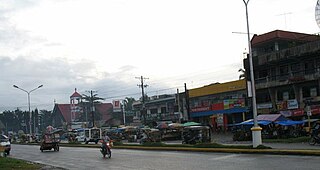
Agusan del Sur, officially the Province of Agusan del Sur, is a province in Caraga region, Mindanao, Philippines. Its capital is the municipality of Prosperidad. It is bordered on the northwest by Agusan del Norte and Misamis Oriental; east by Surigao del Sur; southeast by Davao Oriental; mid-south by Davao de Oro; southwest by Davao del Norte and, mid-west by Bukidnon. It is the fourth largest province in the country in terms of area.

Caraga, officially the Caraga Administrative Region and designated as Region XIII, is an administrative region in the Philippines occupying the northeastern section of Mindanao. The region was created through Republic Act No. 7901 on February 23, 1995. The region comprises five provinces: Agusan del Norte, Agusan del Sur, Dinagat Islands, Surigao del Norte, and Surigao del Sur; six cities: Bayugan, Bislig, Butuan, Cabadbaran, Surigao and Tandag; 67 municipalities and 1,311 barangays. Butuan, the most urbanized city in Caraga, serves as the regional administrative center.

Tandag, officially the City of Tandag, is a 5th class component city and capital of the province of Surigao del Sur, Philippines. According to the 2020 census, it has a population of 62,669 people.
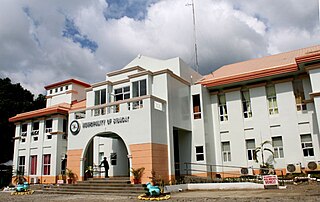
Sibagat, officially the Municipality of Sibagat, is a 1st class municipality in the province of Agusan del Sur, Philippines. According to the 2020 census, it has a population of 33,957 people.
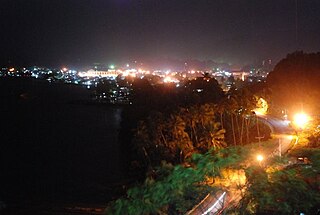
Bislig, officially the City of Bislig, is a 3rd class component city in the province of Surigao del Sur, Philippines. According to the 2020 census, it has a population of 99,290 people.
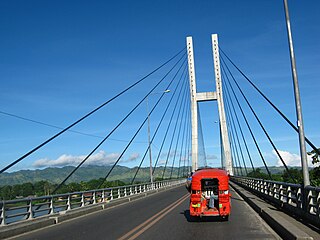
Butuan, officially the City of Butuan, is a 1st class highly urbanized city in the region of Caraga, Philippines. It is the de facto capital of the province of Agusan del Norte where it is geographically situated but has an administratively independent government. According to the 2020 census, it has a population of 372,910 people.

Buenavista, officially the Municipality of Buenavista, is a 1st class municipality in the province of Agusan del Norte, Philippines. According to the 2020 census, it has a population of 68,892 people.

Cabadbaran, officially the City of Cabadbaran, is a sixth class component city and de jure capital of the province of Agusan del Norte, Philippines. According to the 2020 census, it has a population of 80,354 people.

Carmen, officially the Municipality of Carmen, is a 4th class municipality in the province of Agusan del Norte, Philippines. According to the 2020 census, it has a population of 23,172 people.

Jabonga, officially the Municipality of Jabonga, is a 3rd class municipality in the province of Agusan del Norte, Philippines. According to the 2020 census, it has a population of 24,855 people.

Kitcharao, officially the Municipality of Kitcharao, is a 4th class municipality in the province of Agusan del Norte, Philippines. According to the 2020 census, it has a population of 21,278 people.

Las Nieves,, officially the Municipality of Las Nieves, is a 2nd class municipality in the province of Agusan del Norte, Philippines. According to the 2020 census, it has a population of 30,240 people.

Magallanes, officially the Municipality of Magallanes, is a 4th class municipality in the province of Agusan del Norte, Philippines. According to the 2020 census, it has a population of 22,293 people.

Remedios T. Romualdez, officially the Municipality of Remedios T. Romualdez, is a 5th class municipality in the province of Agusan del Norte, Philippines. According to the 2020 census, it has a population of 17,155 people.

Tubay, officially the Municipality of Tubay, is a 4th class municipality in the province of Agusan del Norte, Philippines. According to the 2020 census, it has a population of 25,785 people.
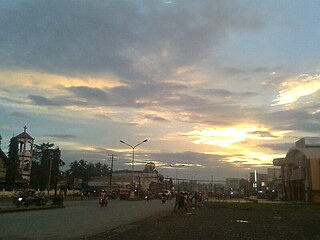
Bayugan, officially the City of Bayugan, is a 5th class component city in the province of Agusan del Sur, Philippines. According to the 2020 census, it has a population of 109,499 people..

San Francisco, officially the Municipality of San Francisco, is a 1st class municipality in the province of Agusan del Sur, Philippines. According to the 2020 census, it has a population of 80,760 people.

Surigao City, officially the City of Surigao, is a 1st class component city and capital of the province of Surigao del Norte, Philippines. According to the 2020 census, it has a population of 171,107 people.

Butuan Bay is a bay and extension of the Bohol Sea or Mindanao Sea, in the northeast section of Mindanao in the Philippines. Its main river source is the Agusan River, which empties into the bay at the coastal city of Butuan. Butuan Bay is completely contained with the Agusan del Norte province.

























